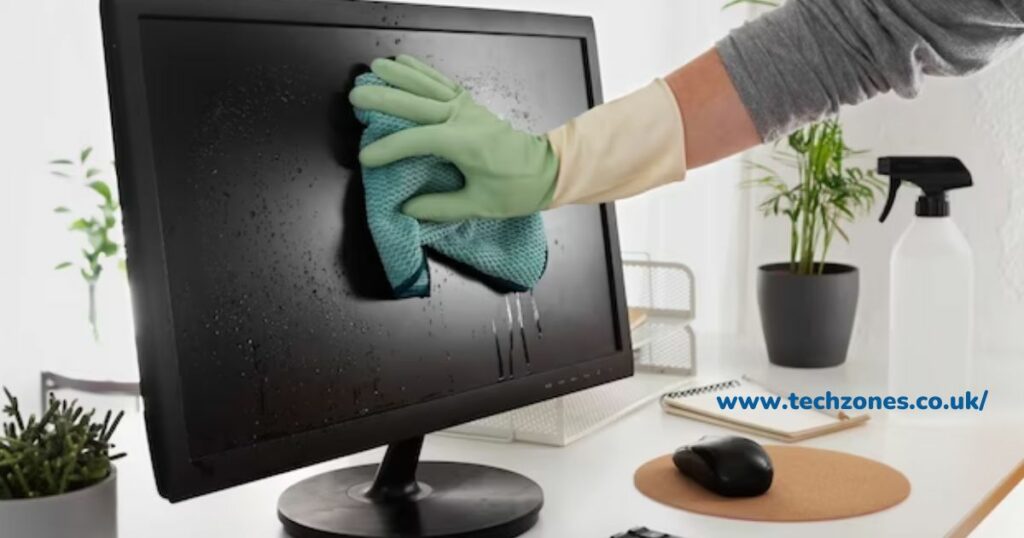Is your Windows 10 computer running sluggishly and in need of a speed boost? Cleaning up your system is an excellent way to optimize performance and make your computer run faster. By removing unnecessary files, disabling startup programs, and optimizing system settings, you can regain that snappy responsiveness you desire. In this article, we will guide you through expert tips and techniques to effectively clean up your computer and optimize Windows 10, ultimately enhancing its speed and overall performance. Get ready to revitalize your system and enjoy a faster, more efficient computing experience.
How to Clean Up Computer to Run Faster?
Before diving into the cleaning process, it’s essential to understand the factors that can affect your computer’s performance. Cluttered files, unnecessary programs, and system errors can all contribute to sluggishness. Additionally, fragmented hard drives and excessive browser data can further hinder performance. Addressing these issues can significantly improve your computer’s speed and responsiveness.
Preparations Before Cleaning Up
Before we begin, it’s important to take a few preparatory steps to ensure the safety of your data. Start by backing up important files to an external storage device or cloud service. This step will safeguard your data if anything goes wrong during cleaning. Also, create a system restore point, allowing you to revert your computer to its current state if needed. Finally, gather the necessary tools and software, including a reputable antivirus program and disk cleanup utilities, to assist you in cleaning.
Step-by-Step Guide: Cleaning Up Your Computer
Now, let’s get into the step-by-step process of cleaning up your computer to optimize its performance.
Scan for Malware and Viruses
Malware and viruses can significantly impact your computer’s performance and security. Start by ensuring that you have an up-to-date antivirus program installed. Update the software and run a full system scan to detect and remove any malicious software that may be slowing down your computer.
Uninstall Unnecessary Programs
Unnecessary programs, especially those that launch during startup, can consume valuable system resources. To uninstall these programs:
- Access your computer’s control panel or settings.
- Look for the “Add or Remove Programs” option and review the list of installed software.
- Remove any toolbars, trial software, or bloatware that you no longer use or need.
Clean Up Disk Space
Cluttered files can take up precious disk space and slow down your computer. Windows 10 provides a built-in Disk Cleanup utility that can help you reclaim some of that space. Search for “Disk Cleanup” in the Windows search bar, select the drive you want to clean, and choose the types of files you want to delete. Be cautious not to delete any important system files.
Manage Startup Programs
Many programs are configured to launch automatically when you start your computer, causing it to take longer. To manage these startup programs, access the Task Manager by right-clicking the taskbar and selecting “Task Manager.” Navigate to the “Startup” tab and disable or remove any programs you don’t need to launch at startup. This will help streamline your computer’s startup process and free up system resources.
Optimize Your Hard Drive
A fragmented hard drive can slow down file access and overall system performance. Fortunately, Windows 10 offers a built-in utility called Disk Defragmenter. Launch the utility by searching for “Defragment and Optimize Drives” in the Windows search bar. Select the drive you want to optimize and click “Optimize” to begin defragmentation. This will rearrange the files on your hard drive, making them easier and faster to access.
Clear Browser Data
Web browsers accumulate significant data over time, such as browsing history, cache, cookies, and temporary files. This data can bog down your browser and slow down your computer. To clear this data, open your browser’s settings and locate the option to clear browsing data. Select the types of data you want to delete and click “Clear” or “Delete.” Regularly clearing your browser data will help maintain optimal browsing speed and performance.
Update Device Drivers and Windows
Outdated device drivers and operating systems can lead to compatibility issues and reduced performance. To update your device drivers, access the Device Manager by right-clicking the Start button and selecting “Device Manager.” Look for devices with a yellow exclamation mark, indicating that a driver update is needed. Right-click the device, select “Update driver,” and follow the prompts to install the latest driver. Additionally, update your Windows 10 operating system by enabling automatic updates. This will ensure that you receive the latest security patches and performance improvements.
Additional Tips for Maintaining Performance
To maintain optimal performance, consider the following tips:
- Regularly restart your computer to clear temporary files and refresh system resources.
- Enable automatic Windows updates to stay current with security patches and performance improvements.
- Use third-party optimization tools cautiously and only from reputable sources.
- Keep your file system clean and organized to improve file access and overall system performance.
Following these step-by-step instructions and incorporating the additional tips mentioned, you can clean up your Windows 10 computer and significantly improve its performance. If you still need clarification, bring your system to our service center.
At Tech Zones, we pride ourselves on being the best in the industry. With a team of highly skilled and experienced professionals, we offer top-notch technical assistance and support. Our commitment to excellence, attention to detail, and customer satisfaction sets us apart. Whether you need assistance with computer repairs, software troubleshooting, or network optimization, our experts are dedicated to providing personalized solutions tailored to your needs. Choose Tech Zones for reliable and efficient tech support that exceeds expectations.


